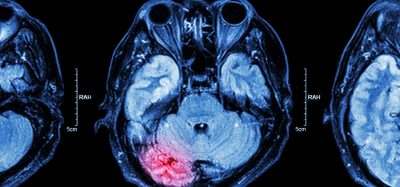MicroRNAs found to play important role in memory formation
Posted: 2 July 2015 | Victoria White
Scientists from The Scripps Research Institute have found that microRNAs plays surprisingly different roles in the formation of memory in animal models…


Scientists from The Scripps Research Institute (TSRI) have found that microRNAs plays surprisingly different roles in the formation of memory in animal models.
In some cases, these RNAs increase memory, while others decrease it.
“Our systematic screen offers an important first step toward the comprehensive identification of all microRNAs and their potential targets that serve in gene networks important for normal learning and memory,” said Ron Davis, chair of TSRI’s Department of Neuroscience who led the study. “This is a valuable resource for future studies.”
Biomarkers aren’t just supporting drug discovery – they’re driving it
FREE market report
From smarter trials to faster insights, this report unpacks the science, strategy and real-world impact behind the next generation of precision therapies.
What you’ll unlock:
- How biomarkers are guiding dose selection and early efficacy decisions in complex trials
- Why multi-omics, liquid biopsy and digital tools are redefining the discovery process
- What makes lab data regulatory-ready and why alignment matters from day one
Explore how biomarkers are shaping early drug development
Access the full report – it’s free!
Unlike some types of RNA, microRNAs do not code for proteins but instead regulate various biological processes by modulating the level of gene expression. A number of studies have shown that microRNAs are critical for normal development and cellular growth and may contribute to the complexity of neurodegenerative diseases.
In the new study, 134 different microRNAs were tested for roles in learning and memory in the central nervous system of Drosophila melanogaster, the common fruit fly, which is a recognised animal model for memory studies.
The researchers tested the potential involvement of microRNAs in intermediate-term memory by silencing them individually and identified at least five different microRNAs involved in memory formation or retention.
When misregulated, microRNAs may exacerbate brain diseases
“Among the five microRNAs identified in this study, we found one that is necessary for memory formation,” said Research Associate Germain U. Busto, a first author of the study with Research Associate Tugba Guven-Ozkan. “Interestingly, its human counterpart is altered in several neurodegenerative diseases, including Alzheimer’s and Huntington’s. It’s possible that this might be a potential model to study and solve some specific aspects of those disorders.”
Surprisingly, the researchers found some microRNAs decreased memory formation, while others increased it. The identified microRNAs affected either neuronal physiology underlying memory formation or the development of the nervous system.
“These microRNAs are highly regulated during brain development and for adult brain function,” said Guven-Ozkan. “When misregulated, they may exacerbate brain diseases like autism, and Alzheimer’s and Huntington’s diseases. We’d like to pinpoint learning and memory pathways to understand how they may lead to human disease.”
The study is published in the journal Genetics.
Related topics
Drug Targets, RNAs
Related organisations
The Scripps Research Institute (TSRI)








